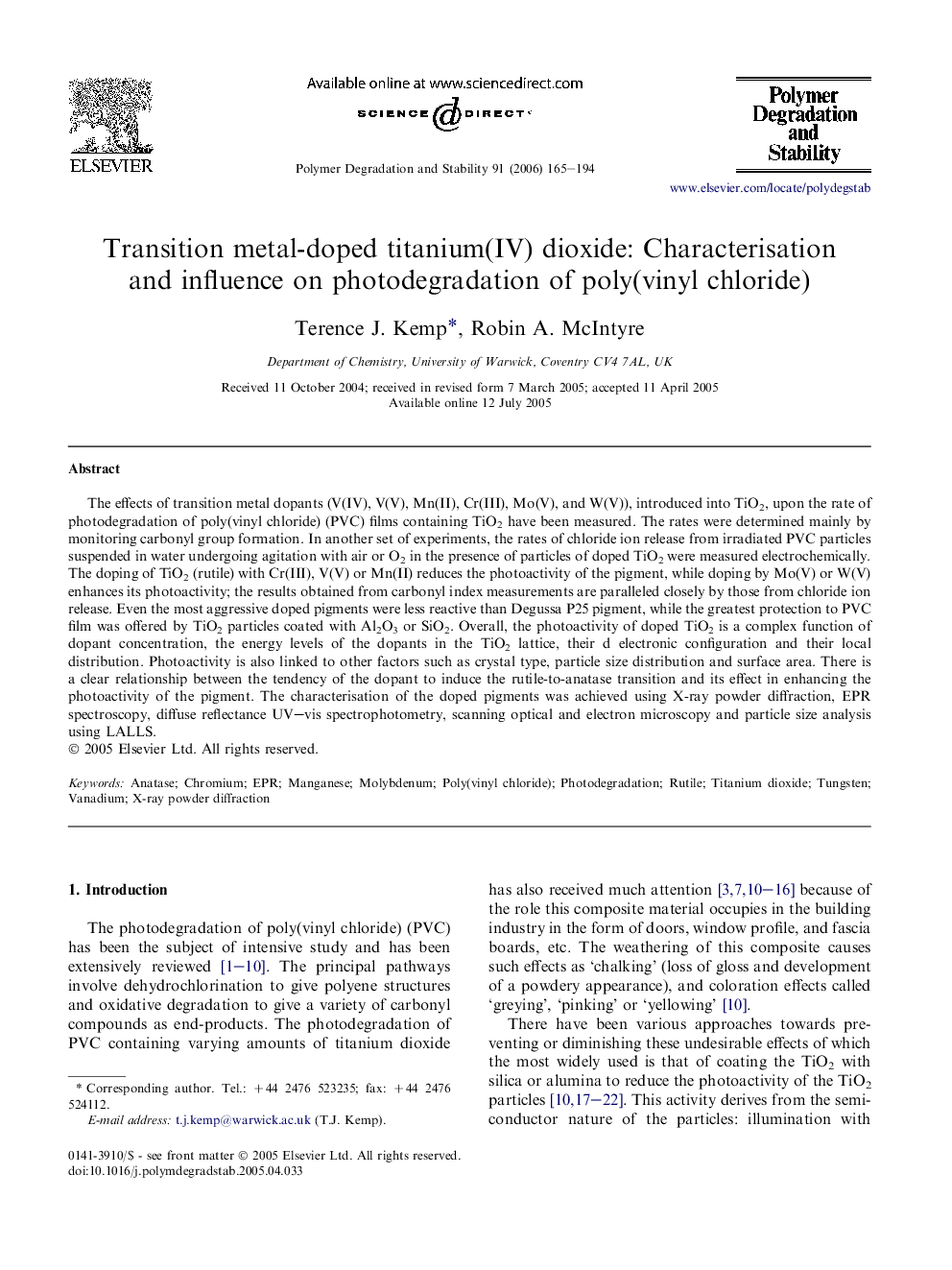| Article ID | Journal | Published Year | Pages | File Type |
|---|---|---|---|---|
| 5205130 | Polymer Degradation and Stability | 2006 | 30 Pages |
Abstract
The effects of transition metal dopants (V(IV), V(V), Mn(II), Cr(III), Mo(V), and W(V)), introduced into TiO2, upon the rate of photodegradation of poly(vinyl chloride) (PVC) films containing TiO2 have been measured. The rates were determined mainly by monitoring carbonyl group formation. In another set of experiments, the rates of chloride ion release from irradiated PVC particles suspended in water undergoing agitation with air or O2 in the presence of particles of doped TiO2 were measured electrochemically. The doping of TiO2 (rutile) with Cr(III), V(V) or Mn(II) reduces the photoactivity of the pigment, while doping by Mo(V) or W(V) enhances its photoactivity; the results obtained from carbonyl index measurements are paralleled closely by those from chloride ion release. Even the most aggressive doped pigments were less reactive than Degussa P25 pigment, while the greatest protection to PVC film was offered by TiO2 particles coated with Al2O3 or SiO2. Overall, the photoactivity of doped TiO2 is a complex function of dopant concentration, the energy levels of the dopants in the TiO2 lattice, their d electronic configuration and their local distribution. Photoactivity is also linked to other factors such as crystal type, particle size distribution and surface area. There is a clear relationship between the tendency of the dopant to induce the rutile-to-anatase transition and its effect in enhancing the photoactivity of the pigment. The characterisation of the doped pigments was achieved using X-ray powder diffraction, EPR spectroscopy, diffuse reflectance UV-vis spectrophotometry, scanning optical and electron microscopy and particle size analysis using LALLS.
Keywords
Related Topics
Physical Sciences and Engineering
Chemistry
Organic Chemistry
Authors
Terence J. Kemp, Robin A. McIntyre,
